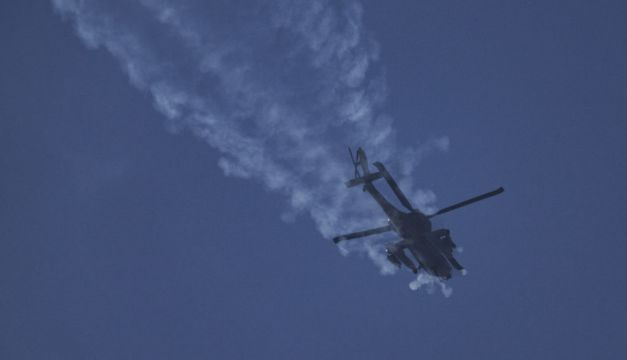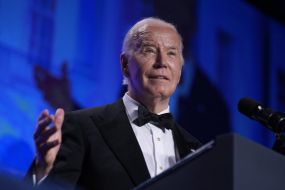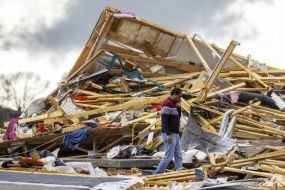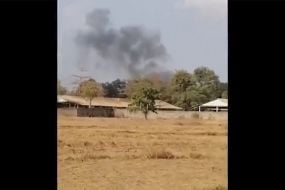Israeli forces are battling Palestinian militants near the main hospital in Gaza’s second-largest city of Khan Younis, where medics said hundreds of patients and thousands of displaced people are unable to leave because of the fighting.
Israel has ordered residents to leave a large area of Khan Younis that includes Nasser Hospital and two smaller medical facilities as it pushes ahead with its offensive against Hamas.
The United Nations humanitarian office said the area was home to 88,000 Palestinians and had been hosting another 425,000 displaced by fighting elsewhere.
The aid group Doctors Without Borders said its staff was trapped inside Nasser Hospital with some 850 patients and thousands of displaced people because the surrounding roads were inaccessible or too dangerous.
UPDATE: Following Israeli forces’ evacuation order of the block where Nasser Hospital is located, MSF staff are hearing bombs and heavy gunfire close to the hospital.
Advertisement— Doctors w/o Borders (@MSF_USA) January 23, 2024
Nasser Hospital is one of only two in southern Gaza that can still treat critically ill patients, the group said. Gaza’s health ministry also said the hospital had been isolated.
The Israeli military said its forces were battling militants inside Khan Younis after completing their encirclement of the city the day before.
It said aircraft were striking targets as part of the operations there and had also targeted suspected militants in central and northern Gaza.
Thousands of people fled south from Khan Younis on Tuesday toward the town of Rafah. The UN said some 1.5 million people – around two-thirds of Gaza’s population – are crowded into shelters and tent camps in and around Rafah, which is on the border with Egypt.
Even there, Palestinians have found little safety, with Israel regularly carrying out strikes in and around the town.
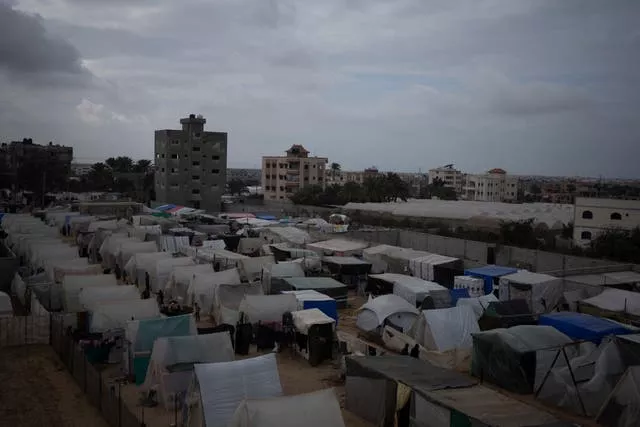
Palestinian witnesses said that in recent days Israeli soldiers and tanks had pushed into parts of Muwasi, a sandy area along the coast that Israel had declared a safe zone, where tens of thousands of people were living in tents without basic services.
In all, some 1.7 million people have been displaced within Gaza, according to the UN refugee agency.
Most have fled from the north, where Israel’s air and ground offensive has reduced entire areas to shelled-out wastelands, raising the question of whether residents will ever be able to return.
Gaza’s health ministry said the offensive has killed at least 25,490 people – the majority of them women and children – and wounded another 63,354.
Its count does not differentiate between civilians and combatants. UN officials have expressed fears that even more people could die from disease, with at least a quarter of the population facing starvation.
Israeli Prime Minister Benjamin Netanyahu has vowed to press ahead with the offensive until “complete victory” against Hamas, which started the war with its assault across the border on October 7, killing some 1,200 people and abducting another 250.

Mr Netanyahu said Israel is also committed to returning the over 100 hostages that remain in captivity after most of the others were freed in exchange for the release of Palestinian prisoners during a November ceasefire.
But many Israelis, including at least one member of Mr Netanyahu’s War Cabinet, say that is impossible without reaching another agreement with Hamas. The militant group says it will not release any more hostages until Israel ends its offensive.
Families of the hostages are also calling for a deal, and have staged increasingly aggressive protests against Israel’s leaders, even interrupting a parliamentary committee meeting on Monday. Egypt and Qatar were working on a new agreement, but officials say the gap between the two sides is still wide.
In Israel, bitter political divisions that were set aside after the October 7 attack have begun to re-emerge, with Mr Netanyahu facing widespread anger and protests over the failure to prevent the attack and the plight of the hostages.
#Gaza Displaced again.
Photos yesterday of families forced to flee ongoing bombardment in Khan Younis to Rafah, where the population has already quadrupled.
Exhausted parents carrying hungry children. The elderly pushed in wheelchairs. All looking for safety where there is none pic.twitter.com/S1KDXmhTIL— UNRWA (@UNRWA) January 23, 2024
Hamas is still attacking Israeli forces, even in some of the most devastated areas, and firing rockets into Israel. An attack on Monday near the border killed 21 Israeli soldiers, the military’s biggest loss of life in a single attack since October 7.
Israeli media said the troops were working to create an informal buffer zone about half a mile wide along the border to prevent militants from attacking Israeli communities near Gaza. The military said the operation was aimed at providing security for those communities but has declined to say if it plans to carve out an official buffer zone.
The United States, which has provided essential military and diplomatic support for the offensive, has said it is opposed to any attempt by Israel to shrink Gaza’s territory.
But President Joe Biden’s administration has also urged Israel to scale back military operations and facilitate the delivery of more aid – with limited success.
And Mr Netanyahu has outright rejected calls from the U.S. and much of the international community for post-war plans that include the eventual creation of a Palestinian state.
